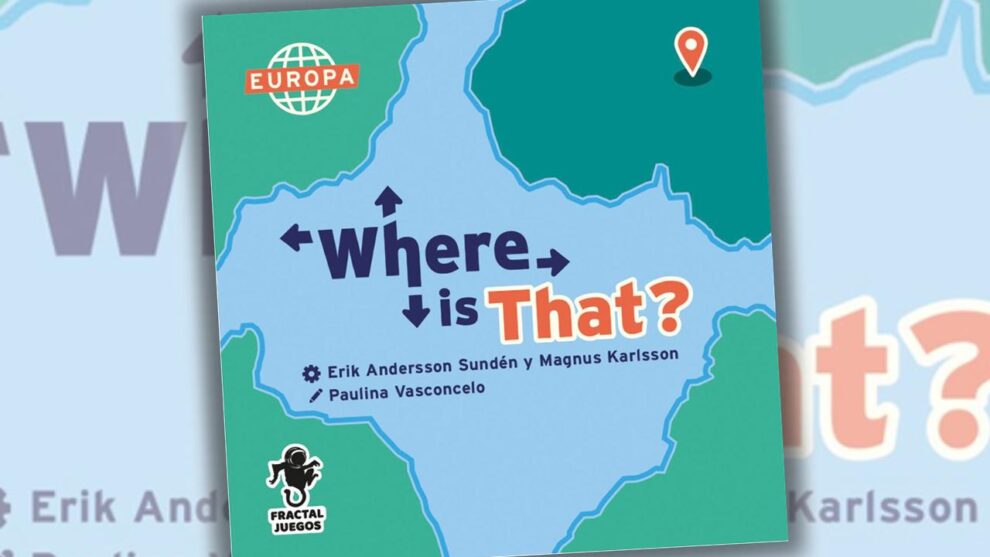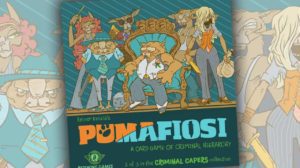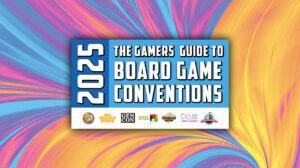Disclosure: Meeple Mountain received a free copy of this product in exchange for an honest, unbiased review. This review is not intended to be an endorsement.
For a period of time in fourth grade, I finished every library class with the same ritual. As soon as we were released to peruse the shelves, I would walk over to the library’s globe and give it a good spin. Floating my finger above the surface, running it up and down as though drawing sine waves, I would wait for the globe to stop. Once it did, no matter where my finger was pointing, I would look for a book in the library that covered that country or region.
I have no idea how I came to start performing that ritual, and I don’t know for how long it lasted. I may be describing as a “ritual” something that I did two or three times over the course of a single month. Childhood memories are funny that way. What I do know is, I thought of that ritual for the first time in many years, and I have thought of it often, while playing Where Is That?: Europe, from publisher Fractal Juegos.
There are two modes of play included in the box, though they both boil down to the same idea: create the least useful map you’ve ever seen in your life. Each card in this box features a European city, identified by name and national flag on the back of the card. Whether playing with the rules that create a single map in the center of the table, or the rules that have each player making their own map in front of them, the idea here is that you have to place the cities blind.
 The goal is to have them accurately aligned relative to any surrounding cards. You aren’t trying to put Berlin in exactly the right spot. You just want to make sure it’s west of Krakow, south of Helsinki, east of London, and north of Malta. This means you can end up with some very strange maps, which has proven an enjoyable issue for some of my more visually-oriented friends. If you have a strong sense of what Europe looks like, it can be disorienting to see it rendered in fractals.
The goal is to have them accurately aligned relative to any surrounding cards. You aren’t trying to put Berlin in exactly the right spot. You just want to make sure it’s west of Krakow, south of Helsinki, east of London, and north of Malta. This means you can end up with some very strange maps, which has proven an enjoyable issue for some of my more visually-oriented friends. If you have a strong sense of what Europe looks like, it can be disorienting to see it rendered in fractals.
In the rule set with a shared map, you place your city face-down anywhere you like, adjusting the cities around it to make space. Then, you reveal the front of the card, which shows the city on a map. Each edge of the card has a half-circle with a number, indicating its relative position along the North-South and East-West axes. Neighboring cards form circles, and both cards are placed correctly if the orange number in the circle is the smaller of the two.
While it would be fairly easy to add a city along the fringes of the map, you score more points for more complete circles. I love games that encourage risk-taking. I’m not sure exactly where Bursa is in relation to Ankara and Istanbul, and I could just put it south of Bucharest, but I want those extra points, so I’m about to find out.
In the other rule set, players draft cities from the middle of the table, patching together a private face-down map that isn’t revealed until the deck runs out. There’s less of an acute sense of tension in this mode, but that also means it’s less embarrassing to get something wrong. Both work. Both are fun.
Where Is That? is what I would describe as a fun little game, which is a compliment. It’s not overly ambitious, nor is it tired. It stirs up just a little curiosity, a desire to see and learn more about places you may not have known existed—I’m a well-travelled person and a number of the cities listed here were not known to me, or at least had never been highlighted in such a way that they stuck around in my mind.
The magic here, as is often the case with games, comes from the company you keep while playing. Kids have questions. Heck, adults have questions. They also have travel stories, family histories, and linguistic factoids. Where Is That? creates a warm, comfortable atmosphere, one that eases people into opening up. I have left more than one game with cities and countries to read more about. Any game that makes you more curious about the world around you is more than alright by me.










Add Comment